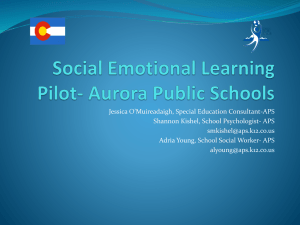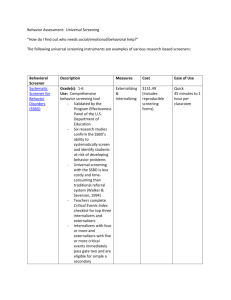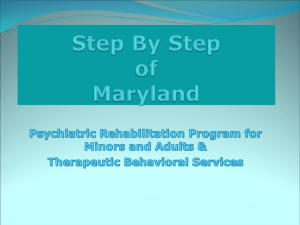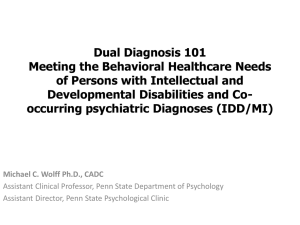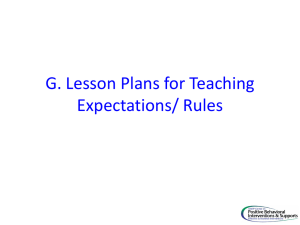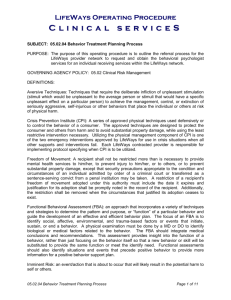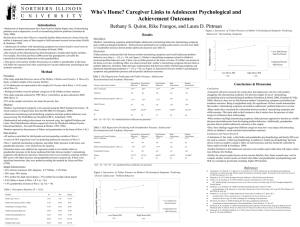Mental Health in School - Hardeman County Schools
advertisement
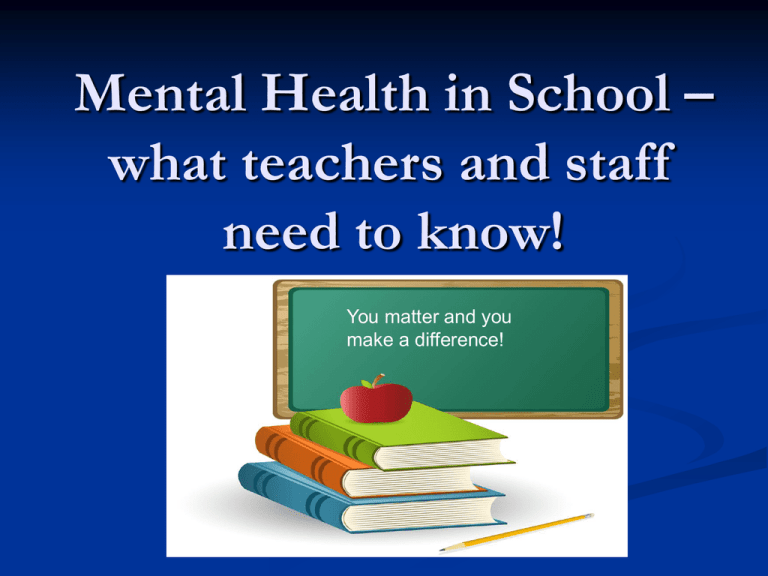
Mental Health in School – what teachers and staff need to know! You matter and you make a difference! School’s mental health begins with a positive school climate. Does your school have a positive school climate? How do you know? Why is this important? School connectedness refers to the belief by students that adults in school CARE about them When young people feel connected to their school it increases the likelihood of academic success (Blum and Libbey 2004) The sense of connectedness also reduces fighting, truancy and drop out rates (Blum and Libbey 2004) Why is this important? Increased school connectedness is related to educational motivation, classroom engagement and lower rates of disruptive behavior. (Blum and Libbey 2004) Students who feel connected experience less emotional distress (Wingspread Declaration on School Connections) Recipe for positive school climate Build real relationships with your students Listen attentively Try to give individual attention Use praise and warmth generously Be a mentor Look for a child’s strengths and promote them YOU can make a difference! Remembering our mentors What adult member of your community or school helped you the most when you were a child? (teacher, coach, neighbor, etc) What were their characteristics? What about them and their personality helped you grow? Staff/teachers Reflect and write for 2-3 minutes Share the characteristics of mentors Children who may need a referral for school counseling assistance Children can have both internalizing or externalizing behaviors, that are concerning. Many children that are not a behavior problem may need emotional support from the school counselor or school social worker. Internalizing behaviors Withdrawn Isolation Anxiety depression/sad mood Somatic complaints (physical complaints) Poor appetite or over eating (severe weight gain or weight loss) Insomnia or hypersomnia (sleep disruptions) Internalizing behaviors con’t Diminished interest/pleasure in activities Fatigue/loss of energy nearly every day Diminished ability to think/concentrate Rejection by peers Extremely disorganization (as compared to peers) Externalizing Behaviors Disrespectful Breaks rules Inattentive Aggressive Steals Frequent Temper outbursts Excessive stubbornness Externalizing Behaviors con’t Very fidgety – can’t stay in seat when developmentally appropriate Often interrupts or intrudes on others Runs or climbs excessively when not appropriate Does not seem willing or able to follow directions Can be both ……(externalizing and internalizing) School truancy School refusal Substance abuse Self injurious behavior Trauma reenactment How to make a referral for counseling services in Hardeman County Schools Contact school counselor and fill out referral form Return referral form to school counselor School counselor will turn referral form to school social worker School social worker will determine what intervention (i.e., individual counseling, behavior plan, teacher consultation, etc.) will best meet the needs of the individual student Lots of kids just need a helping hand, others need mental health treatment! Mental Illness in children does exist. It’s a real disease, just like diabetes is! Children with mental illness are not choosing to be bad, their behavior signals their distress. A strong partnership between school and parents maximizes the child’s ability to flourish. We are all on the same team! Remember, children who feel cared for in school do better academically, therefore their social emotional growth can not really be separated from school performance. Team Players working together Teachers and school staff have many responsibilities, often too many! Many people help children with distress, most notably parents and sometimes other community agencies and professionals. Teachers and school staff can help children with their behavior in school, on the school bus, and in the school yard. There is a science to it… (and increasing levels of punishment does not work) Behavioral science Important Behavioral Principles Take a “baseline” (the behavioral norm for a student/child) Teach and model the new behavior Reinforce the new behavior frequently but intermittently You may need to “shape” the new behavior Important Behavioral Principles: Provide far more attention for the new behavior than for the problem behavior Take another baseline to see if your reinforcement is working Consider ignoring the problem behavior Important Behavioral Principals: If you need to have a consequence for the problem behavior, have it be logical, administer with the least “fanfare” that you can, neutral tone of voice etc. Keep time outs short, reintegrate child into activities and positive reinforcement as soon as possible. Watch out for inadvertent positive reinforcement of the problem behavior !!! Optional Activity to demonstrate “shaping” When talking to parents….What NOT to say! “Your child has ADHD.” (or any other diagnosis) “Your child can not come back to school without medicine.” – THIS IS AGAINST THE LAW IN TENNESSEE! 20 USC 1412(a)(25) and 34 CFR 300.174 prohibits LEAs from requiring parents to obtain a prescription for a drug as a condition of attendance. What to say Always include strengths and identify the problem behavior in objective and descriptive terms Give an example State a positive at the beginning and the end (make a sandwich) “It’s great that Renee makes friends so easily and I am concerned that she is not staying on task during classroom activities. I also appreciate how willing she is to lead the clean up at the end of the day. Don’t minimize the problem behavior Choose a response and not a reaction Choose a response, prevent a reaction Behavior is a consequence of feelings and needs. Address the feelings and needs or the behavior will not change If you want respect, be respectful Know that you can not force a child to behave Keep your cool, stay in your “wise mind” Be authoritative but not authoritarian Choose a response and not a reaction Assist children in seeing the “future”, help them think through consequences short and long term Be calm and consistent If you are “losing your cool” double the distance between you and the child, and lower your voice Teach students what you want them to do, not just what you do not want them to do Notice and praise appropriate behavior Affirm their strengths Call parents with good news! Remember! You matter and you make a difference!

